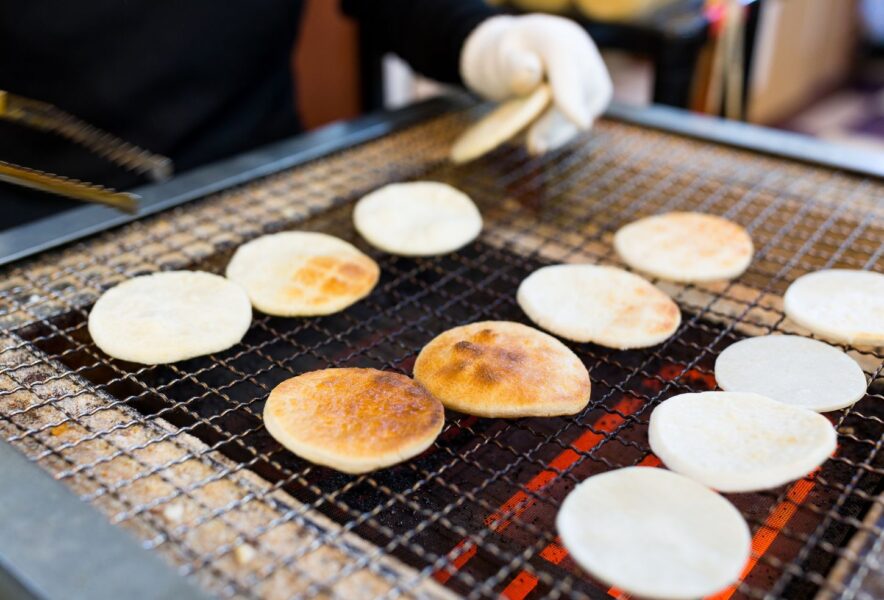- What is Senbei? An Introduction to Japan’s Classic Rice Crackers
- Popular Types of Senbei: Soy Sauce, Sweet, and More
- How Senbei is Made: From Rice to Crisp, Savory Snacks
- Where to Buy Senbei in Tokyo: Supermarkets, Convenience Stores, and Specialty Shops
- Senbei in Japanese Culture: A Traditional Snack with Modern Appeal
What is Senbei? An Introduction to Japan’s Classic Rice Crackers
Senbei are traditional Japanese rice crackers made from rice flour, known for their crispy texture and variety of flavors. These snacks have been enjoyed in Japan for centuries, with origins dating back to the Heian period (794-1185). Senbei can be found in various forms across the country, from savory soy sauce flavors to sweet varieties. Their crunchy texture and wide range of tastes make them a favorite snack for both locals and visitors alike.
Traditionally, senbei are served as a tea-time snack or during special occasions, but today they can be enjoyed any time. You’ll find different versions of senbei across Japan, each region adding its own unique twist to this classic treat.
Popular Types of Senbei: Soy Sauce, Sweet, and More
There are many types of senbei, each offering its own unique flavor and texture. Here are some of the most popular varieties:
- Soy Sauce Senbei: The most common type of senbei, flavored with soy sauce for a rich, savory taste. It’s known for its crispy texture and umami flavor.
- Salted Senbei: A simple, lightly salted version that lets the flavor of the rice shine through. It’s a favorite for those who prefer a less intense flavor.
- Sweet Senbei: Coated with sugar or a sweet soy glaze, this type of senbei offers a combination of sweet and savory flavors. Popular variations include those dipped in sweet syrup or flavored with sweet rice malt.
- Nori-Wrapped Senbei: These senbei are wrapped in sheets of roasted seaweed, adding a slightly briny flavor that complements the soy sauce seasoning.
- Sesame Senbei: Made by mixing sesame seeds into the dough, these senbei have a nutty flavor and an extra crunch, offering a unique twist on the traditional recipe.
How Senbei is Made: From Rice to Crisp, Savory Snacks
Senbei are traditionally made from non-glutinous or glutinous rice, which is steamed, mashed into a dough, and then shaped into discs. These rice discs are dried before being grilled or baked until they become crispy.
Historically, senbei were grilled over charcoal, giving them a distinct smoky flavor. Today, while many senbei are mass-produced in factories, artisanal shops still use traditional methods, grilling each senbei by hand for a superior texture and flavor. The flavorings, such as soy sauce or sugar glaze, are applied after the senbei is cooked, allowing for a variety of sweet and savory options.
Where to Buy Senbei in Tokyo: Supermarkets, Convenience Stores, and Specialty Shops
In Tokyo, senbei are widely available in supermarkets and convenience stores, making them an easily accessible snack for both locals and tourists. You’ll find classic flavors like soy sauce or salted senbei in these shops, along with regional specialties and unique varieties.
For a more authentic experience, head to one of Tokyo’s specialty senbei shops, many of which are located in historical areas such as Asakusa and Nihonbashi. These shops often offer hand-grilled senbei, providing a chance to taste the rich, smoky flavor that traditional methods produce. Senbei are also a popular souvenir, with many shops offering beautifully packaged gift sets that make for perfect presents.
Senbei in Japanese Culture: A Traditional Snack with Modern Appeal
Senbei has long been a part of Japanese culture, enjoyed during tea ceremonies, holidays, and as a snack during social gatherings. It’s often served alongside green tea, with its salty or sweet flavors complementing the bitterness of the tea. In modern times, senbei remains a popular snack for all ages, but it has also evolved with new flavors and styles to cater to younger generations.
In recent years, creative variations like chocolate-covered senbei or Western-inspired flavors have gained popularity, showing how this traditional snack continues to adapt to modern tastes. While rooted in history, senbei remains a versatile and beloved part of Japan’s culinary landscape.

Comment